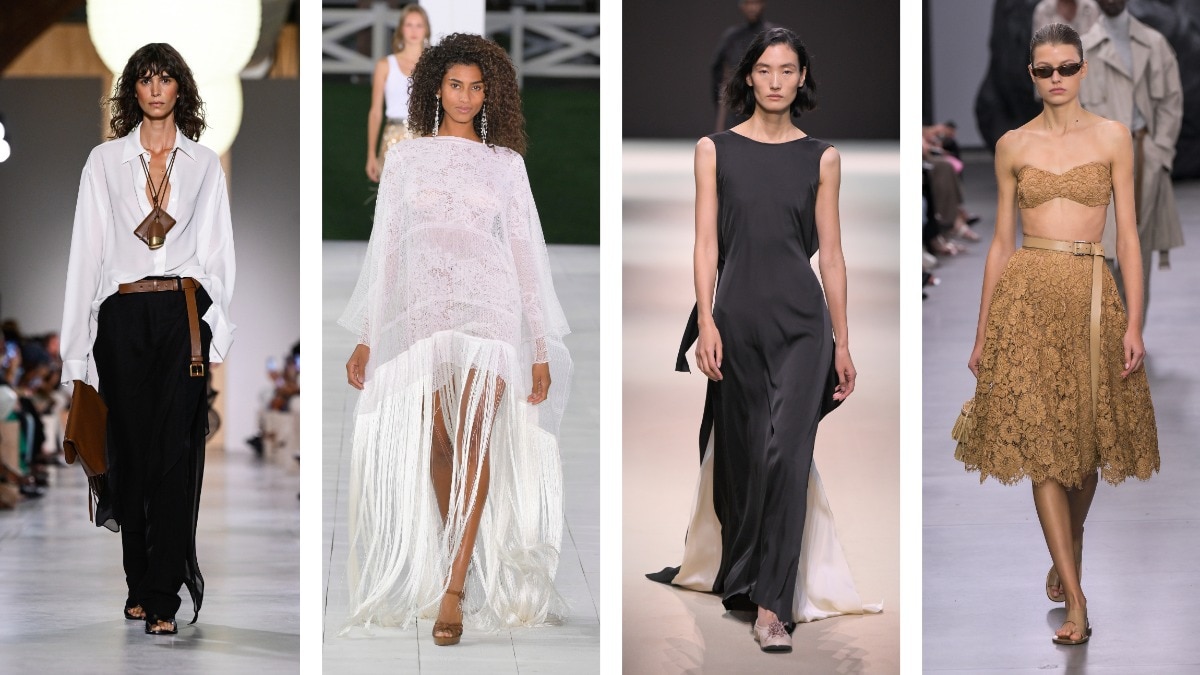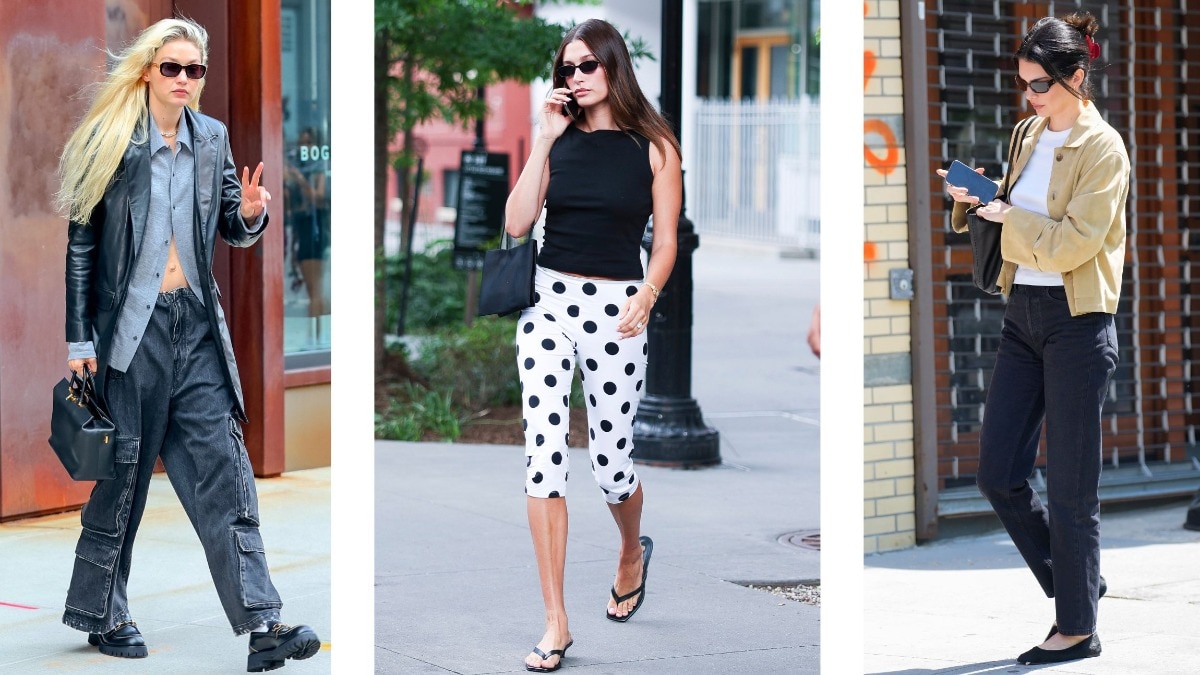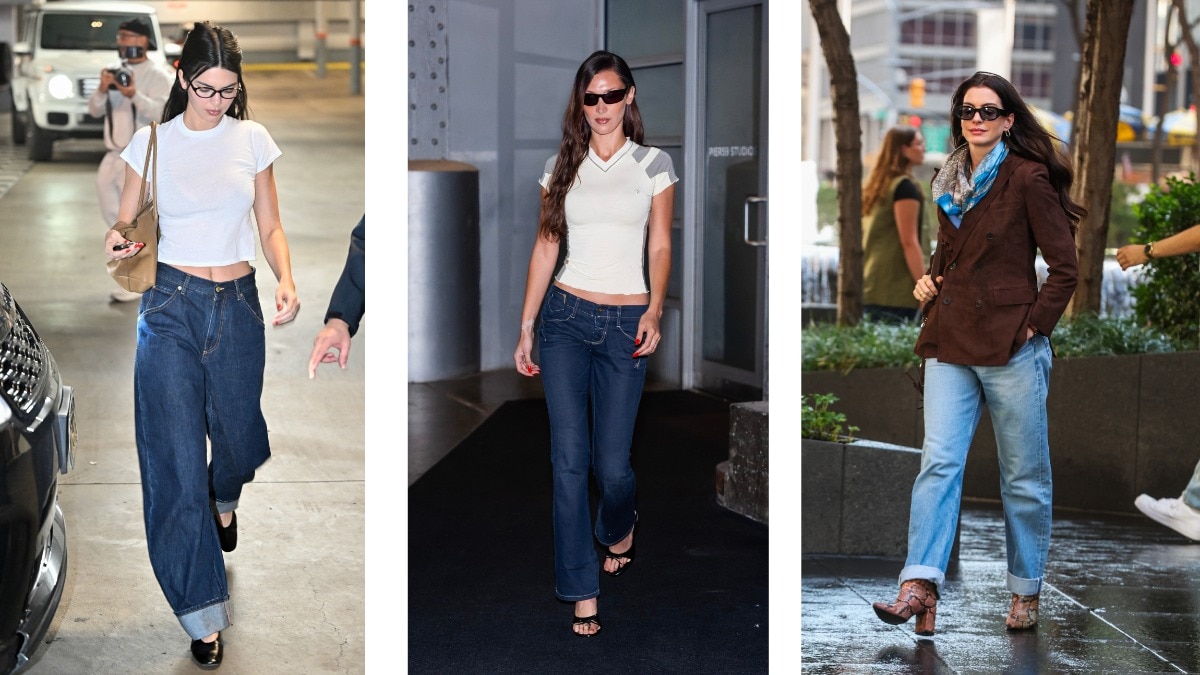Are celebrities defining and redefining the fashion game?
Image-making and value propositions on the red carpet have distorted the idea of what fashion is and should be.


There is an argument in William Hogarth’s book, The Analysis of Beauty—“The ear is as much offended with one even continued note as the eye is with being fix'd to a point or to the view of a dead wall”—where the 18th-century English painter and writer discusses the premise that our senses are offended by the oppositional idea of sameness, or rather a lack of variation. Think of a custom-made, corseted haute couture gown (whose price is equivalent to an entry-level annual salary or up)—the recall value is almost illimitable.

To take the thought further, let’s dive into the myth of the Internet and fashion. Google is said to have created an image search as a result of pop star Jennifer Lopez walking down the red carpet of the 2000 Annual Grammy Awards wearing a green jungle-print Versace dress—in which iridescent palm fronds quietly crept up the hemlines like a forest transforming into full bloom—that was cut down to her navel and up to her crotch. This led to millions of people searching for the dress on Google, making it the most-searched-for item the platform had ever seen, according to Eric Schmidt, former CEO of Google. And a month later, Google Image Search was established.
Of course, there was no Instagram or live streaming back then; most people watched red-carpet events and fashion shows, in person rather than through the lenses of their tiny cameras; designers only produced two collections a year, or at least the two we were aware of; editors and glossy magazines were still the go-to sources for fashion news; diversity was essentially nonexistent.
Now we have Instagram.

Another case in point: Aishwarya Rai Bachchan walked up the 60-plus-foot red carpet at the ongoing Cannes Film Festival in front of a gauntlet of guests, dressed in a black corseted gown that suddenly transformed into a silver cape, morphing from behind into a giant hood. Encrusted in thousands of tiny aluminium paillettes and shimmer-smattered crystals and handcrafted in the couture ateliers of Azerbaijan, the creation was masterminded by the label Sophie Couture's creative director, Gunel Babayeva.
Indian novelist Shobha De dissed the look on her Instagram handle, saying, “What this is, plisssss? Cannes, anybody explain?” While others, in solidarity, defended Bachchan’s statement-making outfit, saying that it was a celebration of the actor’s personal style—a totem of identity and expression.

Or even when Bachchan, in 2016, at Cannes for the premiere of her film Sarbjit, walked the red carpet wearing an off-shouldered Rami Kadi gown, fully embroidered in a constellation of flora and fauna and accompanied by a trail, gathered and neatly folded to mimic pleats, she made a statement that has recall value even now. Not just because of the gown, which was a feat of craftsmanship, but because of the lipstick, which she wore as the ultimate pièce de résistance—a pale purple colour that still stands the test of time. It was a beauty, or rather, style statement that still to this day has the utmost recall value: when you think of purple lips, you think of ARB!
And that is the exchange that is seen for almost every celebrity choice, which only means we must add to the recall value of any outfit manifold, also putting pressure on the need to renew the look for every public outing that a celebrity does
Overproduction leads to overconsumption
In generating a new look on every single red carpet, have celebrities infiltrated our culture to say that clothes worn once are meant to be disposed of?
According to Theanne Schiros, a research scientist at Columbia University, the fashion industry is to blame for 10 percent of the world's carbon footprint and 20 percent of all industrial water pollution. This is due to ‘fast fashion,’ which enables firms to produce and market clothing faster than runway models can show it off. Be it footwear or accessories, 85 percent of clothing is disposed of in landfills or incinerators, where it disintegrates and releases the potent greenhouse gas methane.
This brings us to the constant rut of overproducing fashion, a phenomenon that starts at the top of the food chain.

Fashion designer Alessandro Michele’s exit from Gucci in November last year, after helming the brand as the creative director for seven years; and Daniel Lee’s departure from Bottega Veneta in 2021 under a cloud, dogged by talk of bad behaviour, creative block, and a constant rut of producing collections season after season, serve as the perfect example of the pressures people in the creative industry face due to the exponential demands of the products produced and, of course, globalisation as a whole, multiplying those demands.
The Gucci and Bottega Veneta switcheroos do seem especially hilarious in light of the COP27 climate conference in 2022 and additional public pledges to sustainability from all corners of the fashion business. What, after all, often occurs when a company chooses to make changes at the top? Old things must go! if not to the trash can or the burn pit, then at least to the sale racks. Stores are overflowing with more goods. Sustainability entails dedication to a concept or brand, not just to biodegradable components. It suggests a committed partnership, which carries its own inherent worth.
What does this mean for the sustainability of the fashion discourse?
A few years ago, even if fashion people had read about sustainability in school, they probably believed it had nothing to do with fashion. But that was as we said, a few years ago.
It would be easy to say, “How times have changed!”


Now brands frequently lend out existing dresses, which is a more environmentally responsible choice than designing a new design. As a result, celebrities may not always hold onto their red carpet-gowns. Another option that has undoubtedly become more popular over the past year is wearing vintage on the red carpet. Examples include Cardi B’s vintage Thierry Mugler shell dress from the 2019 Grammys adorned with gobstopper pearls, Gwyneth Paltrow in a 1963 Valentino with humongous feathers tramlining the armholes like capes, and Rihanna in a black, vintage 1990s Galliano kimono-dress at the Queen & Slim premiere in Los Angeles that year, in November.


The Princess of Wales (a.k.a. Kate Middleton) re-wore her custom-made, floor-length Alexander McQueen gown, embroidered with minuscule iris flowers, to the BAFTAs in 2017 and to the National Portrait Gala in 2019 (with a tiny alteration: the off-shoulder straps were replaced with tulip sleeves). She played the recycling-of-a-red-carpet-look game again when, in February of this year, the princess re-wore a one-shouldered white gown with intricate Fortuny pleating (also by Alexander McQueen) to the BAFTAs, which she had worn earlier while attending the same awards ceremony in 2020. The only significant change this time? The addition of black velvet opera gloves.

In 2020, the actor Joaquin Phoenix, who won the Best Actor Academy Award (and many others) for his role in the film Joker, wore the same single-breasted, shawl-lapelled Stella McCartney tuxedo that fit like a glove to five different award ceremonies. Yes, five. McCartney, one of the revered designers known to champion the sustainability cause and one of the few to use regenerated mushroom leather, faux fur, sustainable viscose, and plant-based glue, mentioned Phoenix in an Instagram post, saying, “He has also chosen to wear this same tux for the entire award season to reduce waste. I am proud and honoured to join forces with you, Joaquin. Keep inspiring and keep shining your light.”

Academy Award-winning actor Cate Blanchett has already made headlines for initiating conversations centred on the red carpet, a crucial platform for expressing fashion and the fashioned self. “It should be completely unremarkable, the idea of re-wearing (clothes), because we do it in our daily lives,” she claimed in an interview with The Business of Fashion. “We do it out of habit; we do it out of choice; we do it out of necessity.” For the better part of a decade, Blanchett has been recycling her designer clothing as part of her campaign to promote sustainability. Additionally, it’s a protest against the rapid-fire tempo of fashion industry seasons. Case in point: an Armani Privé gown (from Giorgio Armani’s Fall 2023 collection), upended by the gauzy tranquilly of guipure lace and paperweight tulle, was worn twice, once to the Golden Globe Awards in 2014 and for the second time to the Cannes Film Festival in 2018. She wore it yet again, for the third time, to the SAG Awards this year, but this time the lace from the original gown was reused and transformed into a sequinned column dress—falling and settling ever-so-lightly on the body like a velvet runner, draped languidly on a grand piano.
This idea, or rather, the idea that clothes, if repeated on the red carpet by a celebrity, would amount to a cardinal sin; the idea that beauty lies in the eye of the beholder only if what can be attributed to being beautiful is something that can't be seen more than once; or the idea that clothing should not be worn after a season concludes, is something that seems mired and out of touch.
Stylist Meredith Koop, in an interview with The New York Times, said, "You have to celebrate fashion but also be aware of the message people are going to take away." She added, "Fashion can bolster communications in the best-case scenario, be a silent partner, or actually distract."
The theory of ‘change’
So, should change even be demanded in the first place? Perhaps improving the major idea and keeping it for future generations to use should be sufficient. Continuous upheaval and reinvention eventually get as boring as the same old, same old. Additionally, continuing growth on a finite planet is a chimaera that ought to be banished to the realm of fantasy from which it sprang.
Undoubtedly, change can be beneficial at times. It is necessary at times. However, when change is made just for its own sake—for example, change for the sake of shopping, change for analysts, change for investors, or change for celebrities’ clothing choices on global red carpets—it only serves to reinforce our negative behaviours. Both as companies and as customers. And, in that context, the word ‘change’ is just another word for, well, waste.










